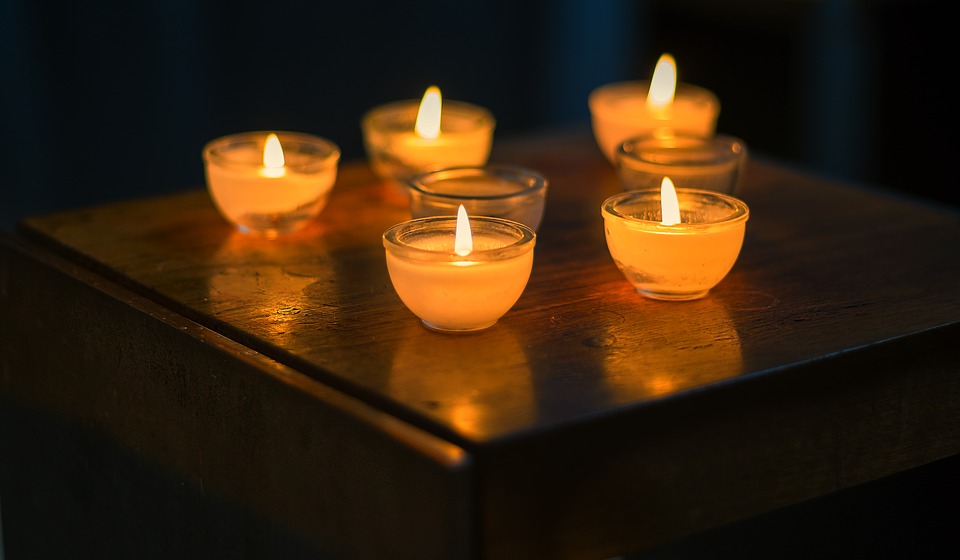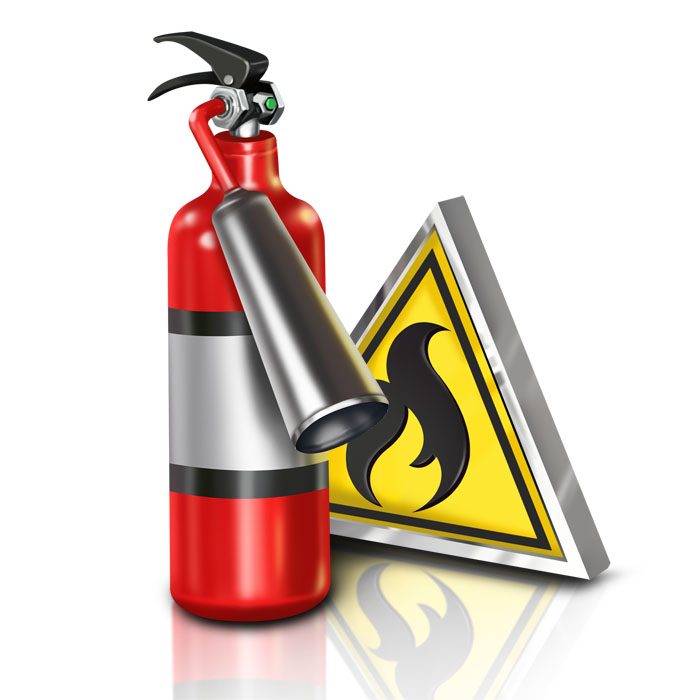At Northeast Security Solutions, we advocate for taking a proactive approach to security whenever possible. Of course, installing equipment that alerts you to events that have already happened always helps. However, some security concerns do lend themselves to anticipation and prevention. Specifically, we often work with customers to identify and lower home fire hazards whenever possible. In this post, we share several of these hazards, as well as how we address them.
First, we’ll look at some common “across-the-board” fire causes for your consideration. After all, knowing how fires often start can go a long way towards preventing them. Then, we’ll break down some areas of concern on a room-by-room basis. Finally, we’ll show you how you can add security equipment that lessens the blow if a fire does start in your home. This discussion will include a look at equipment that detects fires, as well as devices that help you extinguish them. Now, let’s get started with a closer look at some common causes of home fires.
Identifying and Addressing Specific Causes for Concern
If you’ve read our blogs on fire safety in the past, you’ve likely seen us reference the Nationap Fire Protection Association (or “NFPA”). This association creates many of the fire codes and regulations we follow when we install fire detection systems. Additionally, the NFPA also acts as a valuable resource for those looking to build fire awareness and security. For example, they created this rundown of the top causes of home fires to help you anticipate and address these dangers. In particular, you’ll notice cooking, heating, electricity, smoking, and candles singled out as fire hazards.

Certain activities, such as burning candles without oversight over long periods of time, create consistent fire hazards in American households every year.
Of course, you cannot completely avoid some of these activities taking place within your home. However, you can make sure to take extra precautions when undertaking them. For example, anyone cooking should make sure to keep areas around burners clear from aprons, towels, and even loose food. Just as importantly, double-check your stove and oven after using them to ensure they don’t get left on. Likewise, check on any candles you’ve lit to ensure you put them out before going to bed.
When it comes to heating your home, keep heaters clear of any clothing or drapes. A quick walkthrough of your home before turning on the heat can help you catch these easy-to-address hazards. Finally, you can address the threat of an eletcrical fire by making sure to plug appliances that create heat directly into outlets instead of into surge protectors. Furthermore, regular inspections by a licensed electrician can also help you mainatin safer electrical usage in your home. Next up, we’ll address some of your home’s most hazardous rooms from a fire safety perspective.
A Room-By-Room Look at Potential Home Fire Hazards
When we complete site surveys with our customers, we address security concerns in each area of their homes. When it comes to fires, we find that we can generally predict where we might run into common home fire hazards. Specifically, basements, kitchens, and bedrooms generally provide the biggest threats for a fire. In this section, we’ll break down why these areas present such a hazard, and what you can do to help lower the chances of a fire starting in these rooms. Now, let’s begin with a look at improving fire security in your basement.
Basements
The bottom floor of your home contains a litany of fire and carbon monoxide threats. For starters, major appliances such as washers, dryers, and HVAC equipment all pose potential fire trouble. Maintaining this equipment and taking simple precautions such as frequently emptying your dyer’s lint filters can help mitigate these dangers. Additionally, keeping paint, clothing, and other highly flammable objects away from machinery can also prevent fires from spreading quickly. If you haven’t had your electrical box and home’s wiring inspected in the last several years, having an electrician perform this impotant task can also help you tackle one of your home’s most potent fire hazards. Finally, ensure that you keep your potential basement fire escape routes clear. You should always have an easy path to your staircase, as well as to your basement’s exterior door, from any cellar location.
Kitchens
As we mentioned above, cooking causes a large percentage of house fires every year. In addition to taking the precautions we mentioned earlier while cooking, we also recommend regularly cleaning your stove and oven. Moreover, we encourage you to monitor your kitchen’s temperature while cooking. Staying in the room and making sure it doesn’t get too hot can help you catch anything going wrong before your meal bursts into flames. Finally, do not let children in the kitchen unattended. Even if you aren’t cooking, that doesn’t mean that curious toddlers won’t try turning the knobs and pressing the buttons on your oven and stove to see what happens. Keeping this room off limits unless you are also present can greatly reduce the risk of a kitchen fire.
Bedrooms
Fires starting in bedrooms often create even more imminent danger than fires starting in other areas of your home. After all, fires that start in a room while someone is asleep pose an immediate life safety threat. For this reason, we always stress taking extra fire precautions in this area of your home. The aforementioned smoking and candle-related threats we mentioned earlier often come from bedrooms. For this reason, we always tell our customers to put out any smoking or fire-related products well before drifting off to sleep.
Furthermore, we stress the importance of putting phones and tablets on hard surfaces, and not on bedsheets, while they are charging. Charging appliances can heat up and set fire to sheets quite easily! Finally, do not put space heaters anywhere near bedding, drapes, or curtains. Following these tips can help you sleep safely and soundly without the threat of an overnight bedroom fire. Next up, we’ll look at some equipment you can install to lessen the damage caused by a fire.

Equipping your home with fire extinguishers goes a long way towards helping you stop house fires in their tracks. Photo Credit: Atlantic Training on Wikipedia Commons, used under the CC BY-SA 3.0 License.
Installing Security Equipment to Mitigate the Damages of a Fire
Of course, we always encourage remaining as proactive as possible when it comes to fire security. However, we also recommend having equipment installed to lessen the damages caused by a fire that has already started. We offer a couple solutions to help make this happen. For starters, we advise customers to purchase fire extinguishers for their homes. Extinguishers may allow you to stop a fire in its tracks before it gets out of control. Stocking up on them and putting them in high-risk areas, such as the rooms in the previous section, can add tremendous fire security.
Furthermore, we also advise customers to install monitored fire and carbon monoxide (or “CO”) detection. We can connect these devices to any monitored alarm system to create a fire department dispatch whenever you may need one. If a fire-related emergency occurs in your absence, these devices can save your home. More importantly, they can save a life if an emergency occurs when your home is occupied! For these reasons, installing monoitored smoke, heat, and CO detection has long remained one of our top methods of adding fire security to any home.
Identifying and Correcting Home Fire Hazards
We hope that this post helps you recognize and address common home fire hazards. Moreover, we encourage you to contact us with any questions you may have about the material in this post. We will happily answer your security-related inquiries. Additionally, we also encourage you to take advantage of our free site survey program. We offer complimentary security consultations to both new and existing customers alike. While on site, we can address any security concerns you may have. Furthermore, we can make suggestions of our own based on observations made during our visit. Together, we can create a complete fire security plan to keep you, your home, and your loved ones as safe and secure as possible!
